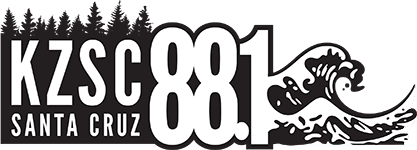
Tuesday, May 22 marked World Goth Day, and although that was over two weeks ago, it’s all I could listen to for over two weeks. To many people “goth” may mean dark clothes and the Hot Topic at your local mall, but here at KZSC, goth means more than that. When we think of goth, we think of music rooted in dark, introspective lyrics and post-punk experimentation whose legacy inspired later acts by the likes of Danny Brown (check his allusion to Joy Division in his 2016 album, Atrocity Exhibition) and Ariel Pink (whose recent performance at the Catalyst was reminiscent of the solid wall of noise and darkness of Bauhaus).
Emerged from the ashes of the London and New York punk scenes, the sonic aesthetic of goth finds its roots in an array of emotional and droning sounds of 60’s rock. Everything from the Doors’ blues rock, to Alice Cooper’s hard rock, to the gritty experimentalism of proto-punk acts such as the Velvet Underground have provided influences to early goth acts from the late 70’s into the 80’s. Of these, Nico’s sophomore album, amidst the underlying misogyny and lack of artistic control of her critically-acclaimed solo debut, saw her ditching folk-pop for a darker, avant-garde aesthetic. This album, The Marble Index, released in 1968, is widely regarded as the first gothic rock album.
In the late 70’s, the term “gothic” became used to describe the atmospheres of post-punk bands inspired by the gloom and doom of the Doors’ and the Velvets’ stage presence. While there were certainly a slew of sounds that emerged from punk rock, some carried a heavier, more authoritative sound. This included goth hits from the likes of Siouxsie and the Banshees, Nick Cave’s early work with The Birthday Party, the Cure, Joy Division, and Bauahaus, whose single “Bela Lugosi’s Dead” is considered to be the earliest seminal goth single. Other punk bands often deemed “horror-core” were also popular among the goth subculture including the Cramps and the Misfits.
The influence of goth expanded from post-punk to new wave bands such as Depeche Mode and Soft Cell, into the eclectic sounds of the 90s and 00s from Portishead’s self-titled second album, to the Cocteau Twins’ emotional dream-pop, to the industrial collages of Nine Inch Nails, to almost genre-less acts of today such as singer Fever Ray and rapper Danny Brown.
Take a listen to my playlist inspired by the goth subculture below:

